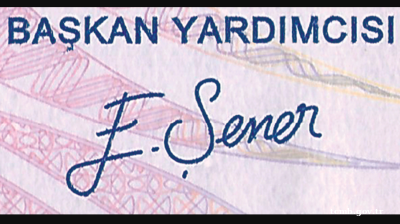1. EXECUTIVE SUMMARY
Political outlook
Opposition parties are preparing to submit no-confidence motions in Prime Minister Igor Matovic's government at the beginning of 2021, over its handling of the pandemic.
Former prime minister Peter Pellegrini is aiming for a comeback with his new party, Voice-SD, and is seeking early elections.
Macroeconomic outlook
The Slovak economy is expected to return to its pre-crisis level in late 2021 or more likely early 2022, depending mainly on the demand of key trading partners and the condition of the automotive industry.
Budget and debt outlook
The majority of pandemic support measures are expected to be phased out in 2021.
In the draft 2021 Slovak state budget, the projected public finance deficit stands at 7.44% of GDP (€7bn).
The government debt-to-GDP ratio is projected to increase rapidly from 48% in 2019 to more than 67% in 2022.
Real economy outlook
Anti-coronavirus restrictions will primarily affect the Slovak service sector through the winter of 2020/21, while industry will continue to fare relatively well.
Markets outlook
The Bratislava Stock Exchange (BCPB) might face some challenges in 2021 as investor interest is falling and liquidity is low. After several companies withdrew their shares in 2020, more may follow in 2021.
2. POLITICAL OUTLOOK
The Slovak political environment is likely to be shaken by the attempts of some opposition parties (Smer-SD and Voice-SD) to submit votes of confidence in Matovic’s coalition government at the beginning of 2021 over the way the government handled the coronavirus crisis. Opposition politicians claim it pointlessly prolonged the state of emergency and restricted citizens' rights.
At the end of 2020, Pellegrini launched an online petition for early elections (at referendum2021.sk). If he gains support, at the January parliamentary session he plans to submit a proposal to change the constitution to shorten the parliamentary term. Pellegrini pointed out that Matovic declared before the 2020 parliamentary elections that such internet polls must be binding on politicians. In order for the referendum to take place, the petition would have to be signed by at least 350,000 Slovak citizens.
According to opinion polls, Pellegrini’s Voice-SD is the most popular party in the country, while support for Smer-SD has dropped to single digits.
Slovakia’s political environment at the beginning of 2021 will also be impacted by the Penta case that broke at the end of 2020. At the beginning of December 2020, Slovak armed police raided the Penta investment group and investigated Penta co-owner Jaroslav Hascak for alleged corruption and money laundering linked with the Gorilla scandal. The Gorilla case concerns recordings of conversations between Hascak and Slovak politicians over bribes from state-related businesses in 2005 and 2006.
Corruption is an important issue in Slovak politics. Almost three years ago, the killings of investigative journalist Jan Kuciak and his fiancee Martina Kusnirova sparked a wave of mass protests that forced then prime minister Robert Fico of Smer-SD to step down. The need to clean up Slovak politics also helped lawyer and environmental activist Zuzana Caputova to secure the presidency in 2019. The trials of those accused of masterminding the killing of Kuciak and Kusnirova ended in acquittals but prosecutors have appealed.
3. MACROECONOMIC OUTLOOK
Most projections, both local and from international financial institutions (IFIs) are for Slovakia to return to the 2019 level of economic activity only in 2022.
The Ministry of Finance estimates that the economy will grow by only 2% or 3% in 2021, with the return to pre-crisis figures postponed to the second half of 2022. The finance ministry noted that the pace of recovery will depend mainly on the demand of key trading partners and the condition of the automotive industry.
According to a revised macroeconomic prognosis by the Slovak Institute for Financial Policy, the Slovak economy is expected to return to its pre-crisis level in late 2021 or early 2022, depending mainly on the demand of key trading partners and the condition of the automotive industry.
The National Bank of Slovakia has a more optimistic forecast for 5.7% GDP growth in 2021.
The EC forecasts Slovakia's economy to grow slightly faster than the average of Eurozone members and the EU27 in the next two years. In 2021, Slovakia is expected to see growth at 4.7%, followed by a 4.3% increase in 2022, according to EC.
The EC's prognosis indicates that Slovakia will see a drop of inflation to 0.7% in 2021, before it goes back up again to 1.4% in 2022. Energy prices have contributed markedly to the slowdown, as the collapse in fuel prices in 2020 is expected to have a strong, lagged effect on regulated energy prices in 2021.
In 2021 the unemployment rate is expected to grow to 7.8%, partly due to the scheduled expiration of protective measures such as short-time work schemes. After that, strong economic growth should improve the labour market in 2022 when the unemployment rate is forecast to drop to 7.1%.
Real wages are expected to grow again in 2021 and 2022, although at lower rates than before the crisis, according to the EC.
Slovakia’s minimum wage should grow from €580 to €623 per month as of 2021; the minimum wage will thus reach 57% of the average salary in 2019.
3. BUDGET AND DEBT OUTLOOK
The draft 2021 Slovak state budget is negatively impacted by risks caused by the COVID-19 pandemic. The projected public finance deficit stands at 7.44% of GDP (€7bn).
The EC expects the general government deficit to decline to around 8% of GDP on the back of the economic recovery. A growth in the tobacco excise duty together with subdued developments in wages, intermediate consumption and interest rates should help lower the deficit.
According to the EC, the budget includes a reserve of more than 1% of GDP to cover risks from the second coronavirus wave. In 2022, the headline deficit is expected to drop by almost 2% of GDP. Public investment is forecast to increase because the use of EU funding should accelerate as the end of the programming period approaches.
The possible absorption of grants under the Next Generation EU package from 2021, estimated by the authorities at up to 0.7% of GDP in 2021, will likely be budget-neutral to a large extent, given that much of the funds will be used for investment projects, Fitch Ratings pointed out.
Gross general government debt as a share of GDP is forecast to peak at 64% in 2022, representing a material deterioration to a level higher than rated peers, from a starting point of 48.3% in 2019. The EC expects the government debt-to-GDP ratio to increase rapidly to more than 67% in 2022.
5. REAL ECONOMY OUTLOOK
Anti-coronavirus restrictions will primarily affect the Slovak service sector during the winter of 2020/21, while industry should continue to fare relatively well as it remains virtually untouched by European restrictions and solid economic conditions in East Asia provide a helping hand to external demand.
Slovakia has a long history of leadership in the automotive industry, and together with Czechia it makes up a significant bedrock of the European industry. The automotive industry has been facing significant challenges due to the COVID-19 crisis. The sector is expected to return to pre-crisis levels in 2H21, with full recovery in 2022.
Czech carmaker Skoda Auto has officially confirmed that the production of the next generation of its Superb model will be relocating together with the production of the Volkswagen Passat from Czechia to Slovakia’s capital Bratislava in 2023. The Volkswagen plant in Bratislava will create 2,000 new jobs via a planned investment of €1bn, said VW Slovakia's personnel director Sebastian Krapoth in November.
As automakers look to the electric future ahead, InoBat Auto plans to build a battery factory in Slovakia, thereby reducing European electric vehicle (EV) manufacturers’ dependence on Asia. In May 2020, the company acquired a 27,000 square metre site near Bratislava to set up an R&D centre that will be able to produce prototype battery cells.
According to FocusEconomics Consensus Forecast, Slovak industrial production is projected to increase by 10.4% in 2021, followed by a growth of 4.9% in 2022. Construction production in Slovakia is expected to trend around 1.90% in 2021 and 2.20% in 2022.
6. MARKETS OUTLOOK
According to analysts, the Bratislava Stock Exchange (BCPB) might face some challenges in 2021. Investor interest in the shares offered on the BCPB has been decreasing in the past two years and its liquidity is very low, meaning a higher risk for large players, which most are not willing to take.
This is why VUB Banka is considering withdrawing its shares from the Stock Exchange in 2021, following Prima Banka, insurance company Union Pistovna and Slovnaft, which all left the stock exchange in 2020.
According to OVB Allfinanz Slovensko financial analyst Marian Bulik, regional stock exchanges only make sense if they can attract a sufficient number of companies that want to raise capital through the stock exchange with suitable conditions. The BCPB has not been successful in this.
The primary condition for the successful functioning of the stock exchange is a strong domestic market and a sufficient number of companies that are large enough for stock exchange trading, which is the fundamental weakness of the Bratislava Stock Exchange.
Features

BEYOND THE BOSPORUS: Investigators feel collar of former Turkish central bank deputy governor
Regime gangs continue to hustle for gains. Some Erdoganist businessmen among the losers.

Journalist beaten to death in Istanbul as security conditions in Turkey rapidly deteriorate
Publisher, meanwhile, is shot in leg. Reporters regularly experience violence, judicial harassment and media lynching.

Agentic AI becomes South Korea’s next big tech battleground
As countries race to define their roles in the AI era, South Korea's tech giants are now embracing “agentic AI”, a next-generation form of AI that acts autonomously to complete goals, not just respond to commands.

Iran's capital Tehran showcases new "Virgin Mary" Metro station
Tehran's new Maryam metro station honours Virgin Mary with architecture blending Armenian and Iranian design elements in new push by Islamic Republic




